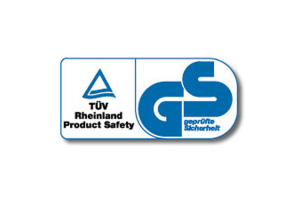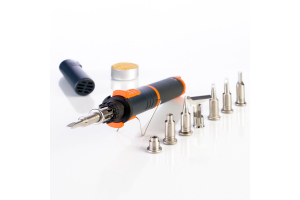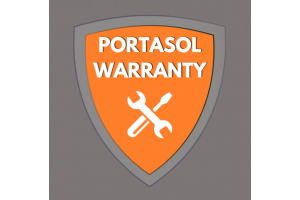
Soldering is a process of joining two metal surfaces together using a low-melting-point metal alloy called solder. It's a fundamental skill used in various areas including electronics, plumbing, and jewelry making. Here's a soldering how to / beginner's guide to soldering:
What you need to solder:
- Soldering iron
- Solder
- Flux
- Cleaning sponge
- Helping hands or a third hand tool (optional)
- Wire cutters/strippers
- Adequate ventilation equipment and protective eyewear
Steps :
- Clean the surface: Ensure the metal surfaces you want to join are clean and free of rust, oil, or dirt. Use sandpaper or a wire brush to clean them up.
- If you plan to use a heat shrink tube to protect the soldered joint when you are finished, do not forget to place it on one of the wires you plan to solder, before you solder. Otherwise, you could have to break and re-solder the joint again!
- Heat up the soldering iron: Turn on your soldering iron and let it heat up for a few minutes, the Portasol butane irons are ready to solder in a matter of seconds.
- Turn on ventilation equipment / put on protective equipment.
- Create a solid connection: if you are soldering wires, twist the ends of the wires together to combine them. Line up their centres so they form an X-shape; then bend one end down and twist it around the other wire as tightly as you can, making sure a good connection forms between them all.
- Apply flux: Apply a small amount of flux to the metal surfaces you want to solder. Flux helps to clean the metal and helps the solder flow better.
- Heat the metal: Hold the tip of the soldering iron against one of the metal surfaces to heat it up. Heat it up enough to melt the solder when it's applied.
-
4.Pre-tin the soldering tip: Pre-tin the tip of the iron with solder so that it conducts heat better. Tinning is done by touching the tip of the iron against solder until it melts onto it.
- Apply solder: Touch the tip of the solder to the heated metal surface and let it flow onto the metal. Use enough solder to create a strong bond.
- Repeat: Continue heating and applying solder until the joint is complete.
- Clean the joint: Once the joint has cooled, use a cleaning sponge to wipe away any excess flux or solder.
- Use the Portasol Heat Shrink Tip to apply heat to the heat shrink tubing on the joint to protect the connection.
Tips:
- Use a soldering iron with adjustable temperature settings to avoid overheating delicate parts. (Portasol offer a range of temperature adjustable soldering Irons including the Superpro 125 and the Propiezo 75).
- Wear protective eyewear to avoid any accidents or splatters.
- Keep the soldering iron clean by wiping the tip on a damp sponge before and after use.
- Practice on scrap materials to get the hang of it before attempting to solder a project.
- With practice, you'll get better at soldering and be able to tackle more complex projects. Good luck!





